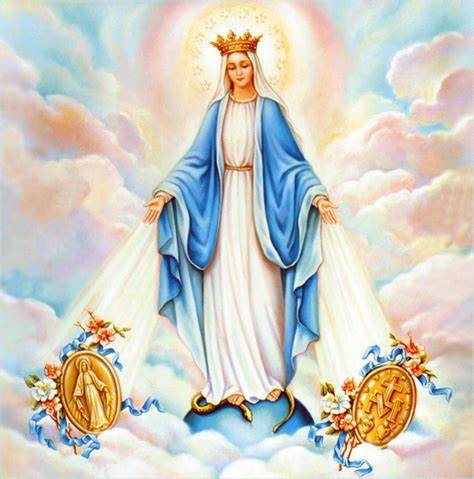
Many times, in the midst of all the Christmas festivities, the true meaning behind it all gets overlooked. Christmas, especially the days leading up to it, is filled with hope and joy. Hope for our savior, Jesus Christ, and joy that he will come in only a few more days. When we celebrate the birth of Jesus during Christmas time, it would be remiss of us not to discuss and honor Christ’s mother Mary. Mary played one of the most important roles, and her Immaculate Conception, shows how she was predestined for God’s plan.
The Immaculate Conception, in the Roman Catholic Church, asserts that Mary was born without original sin, thus enabling her to become the mother of Christ. While various texts have supported this, the overwhelming acceptance of this concept derives from our belief in Mary’s holiness. In the 13th century, various concerns were raised and were countered by a Franciscan theologian John Duns Scotus, who argued that Christ’s grace was applied to Mary to prevent sin from reaching her. Thus, Mary’s unique circumstances, were the result of God’s grace and not anything she had done. There was a gradual acceptance of this view over the next few centuries until December 8, 1854, when Pius IX declared that the doctrine was revealed by God and was to be believed by all Catholics. The Immaculate Conception is now celebrated on December 8th and is a holy day of obligation.
Another vital aspect of the time leading up to Christmas is our Advent preparations and observances. Advent is defined as the period of preparation for the celebration of Jesus Christ at Christmas and is also a preparation for the Second Coming of Christ. Advent is the beginning of the liturgical year. The liturgical color for Advent, in Roman Catholicism, is violet. The third Sunday of Advent, also known as Gaudete Sunday, is marked by rose-colored vestments and candles. The typical marking of Advent is symbolized by an Advent wreath, which contains four candles, three violet and one rose, subsequently lit when each Sunday comes around. The candles symbolize hope, peace, joy, and love.
In conclusion, Christmas is more than presents and decorations. While these things are fun and get us in good spirits, the true meaning of the season, is Christ and his saving grace.
References:
Encyclopædia Britannica. (n.d.). Immaculate Conception. Britannica School. Retrieved December 19, 2024, from https://school.eb.com/levels/high/article/Immaculate-Conception/42188
Encyclopædia Britannica. (n.d.). Advent. Britannica School. Retrieved December 19, 2024, from https://school.eb.com/levels/high/article/Advent/3812
Immaculate Conception Wallpapers [Photograph]. (2019, July 5). https://www.bing.com/images/search?view=detailV2&ccid=I%2FTVcttH&id=5DF87AD1A972DB5165C047ED203C07FEBFF190CD&thid=OIP.I_TVcttHkUrxOB7rznQYKwHaHf&mediaurl=https%3A%2F%2Fwallpapercave.com%2Fwp%2Fwp2356971.jpg&cdnurl=https%3A%2F%2Fth.bing.com%2Fth%2Fid%2FR.23f4d572db47914af1381eebce74182b%3Frik%3DzZDxv%252f4HPCDtRw%26pid%3DImgRaw%26r%3D0&exph=1199&expw=1186&q=immaculate+conception+image&simid=608032624025226615&form=IRPRST&ck=3CA742628F53F3D7C285422FAB9F0E68&selectedindex=13&itb=0&cw=1289&ch=697&ajaxhist=0&ajaxserp=0&vt=0&sim=11

